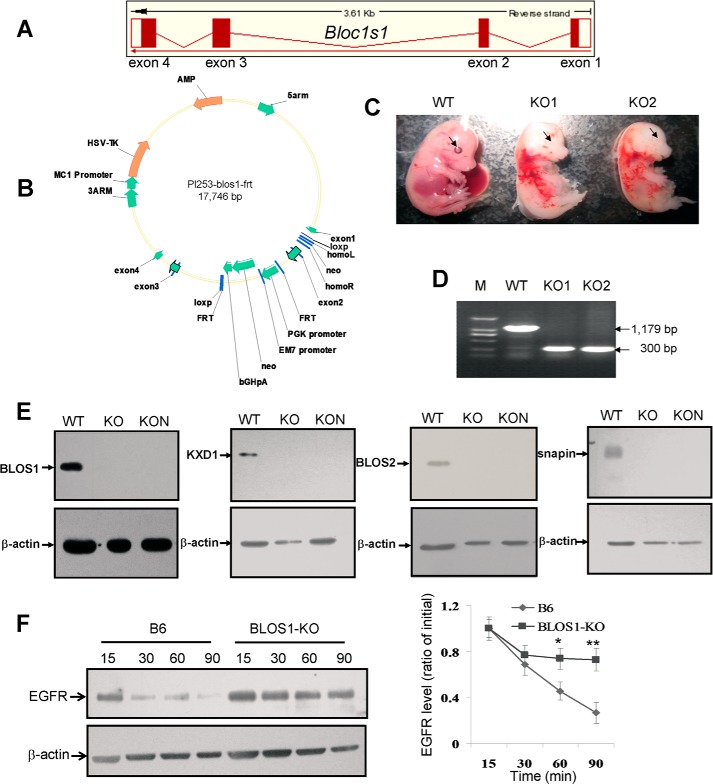FIGURE 5.
Generation of Bloc1s1 knock-out mice. A, schematic diagram of exons and introns of mouse Bloc1s1 gene from the Ensemble genome database. B, schematic diagram of gene targeting vector of mouse Bloc1s1. Note that exon 2 is engineered to be deleted by inserting two flanking loxp sites in intron 1 and intron 2 and a neomycin (neo) cassette. Using this gene-targeting strategy, the obtained heterozygous Bloc1s1 knock-out mice (Bloc1s1+/−) were generated by crossing Bloc1s1loxp/+ mice with EII-Cre or nestin-Cre mice. Intercross of Bloc1s1+/− mice produced null mutant mice (Bloc1s1−/−) with exon 2 deletion. C, pictures of embryonic mice (E14.5). WT, wild-type; KO1 and KO2 are two different Bloc1s1 knock-out embryos of EII-Cre × blos1-loxp. Note that eye pigment is missing in KO mice compared with the WT mice as indicated by the arrows. D, genomic PCR verification of the deleted exon 2 of Bloc1s1. The WT allele gives rise to the PCR amplicon of 1,179 bp, whereas the mutational allele gives rise to a 300-bp amplicon. The mice were tested are shown in C by tail DNA. E, BLOS1 protein is null in both ubiquitous knock-out (KO and EII-Cre × blos1-loxp) and neuron-specific knock-out (KON and nestin-Cre × blos1-loxp) brain tissues compared with wild-type littermates (WT). Several subunits of BLOC-1 such as KXD1, BLOS2, and snapin are destabilized, supporting that BLOS1 is a subunit of BLOC-1. β-Actin is a loading control. F, degradation of EGFR is delayed in BLOS1-KO (ubiquitous) MEF cells compared with the wild-type B6 MEF cells. Quantitative data are shown on the right side.

